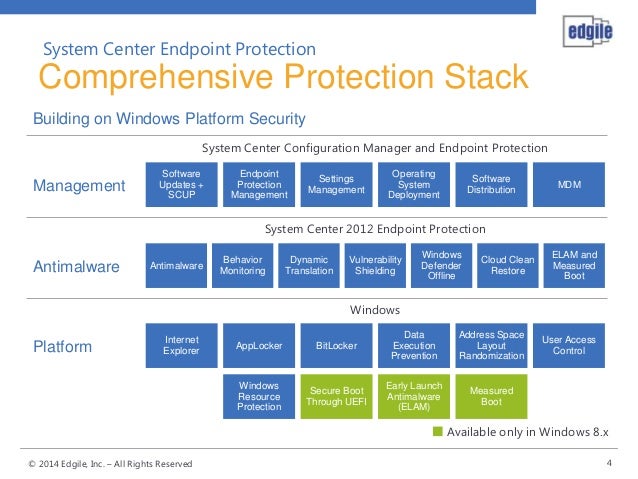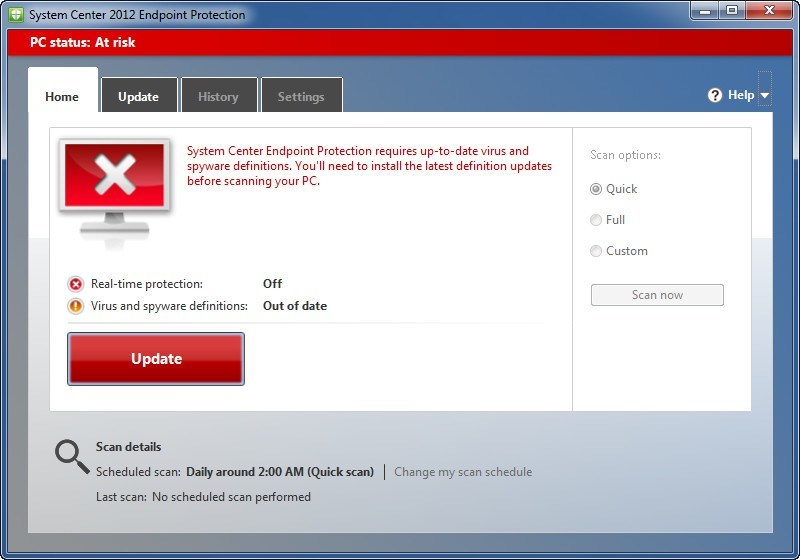

Previously, in FEP 2010, management features were located in the FEP portion of the SCCM 2007 R3 console. The new interface has task panes and ribbons like Outlook or another System Center 2012 component, the backup application Data Protection Manager (DPM) 2012. SCCM 2012 has a totally new interface from SCCM 2007.


However SCEP’s integration with SCCM 2012 is completely different and requires a re-learn for SCCM 2007 and FEP 2010 administrators. SCEP’s predecessor, FEP 2010, was integrated with, and deployed by SCCM 2007 R3. The right way to deploy SCEP is using the SCCM console: to configure the SCEP client to be installed, and to apply an anti-malware policy. xml Deploying and managing SCEP with SCCM 2012 Here is the command line to install SCEP manually with an exported SCEP policy: SCEPInstall.exe /policy. However if you need to, you can just run SCEPInstall.exe and accept the default setup options. Manually installing SCEP should be avoided since doing so may preclude automatic SCEP client service by SCCM. Figure A Every SCCM agent is one click away from being a SCEP client. Figure A shows the setup file that can be run manually, or more likely run automatically by a SCEP policy applied to a SCCM collection of computers. Installing anti-malware agent could not be easierįor customers already running SCCM 2012, the useful thing is that the SCEP setup file, a single 18-MB file “SCEPInstall.exe”, is pre-installed in the %windir%\ccmsetup folder of every SCCM agent. Installing, configuring, and updating a third-party anti-malware product, if you already own System Center, is an additional cost to carefully consider the need for. Your decision is when and if you will activate SCEP setup with an SCCM device setting. The SCEP install file is now automatically installed with every SCCM agent. The integration of SCEP with its management framework, System Center Configuration Manager 2012 (SCCM), is complete. SCEP is a “V3” release of Microsoft’s premier anti-malware client.

High investment in third-party anti-malware products may not be necessary for these organizations. Today, owners of Microsoft System Center 2012 management licenses for client and/or server computers already own SCEP because an endpoint protection license is included with System Center 2012. In that article I covered a brief history of FEP, its origins (Forefront Client Security, FCS) and relatives (Microsoft Security Essentials, MSE). Last year, I wrote about deploying Forefront Endpoint Protection 2010 (FEP), the predecessor to System Center Endpoint Protection 2012 (SCEP). John Joyner explains why System Center 2012 admins might want to enable the built-in anti-malware before investing in third-party anti-malware products. Easy anti-malware with System Center 2012 Endpoint Protection


 0 kommentar(er)
0 kommentar(er)
